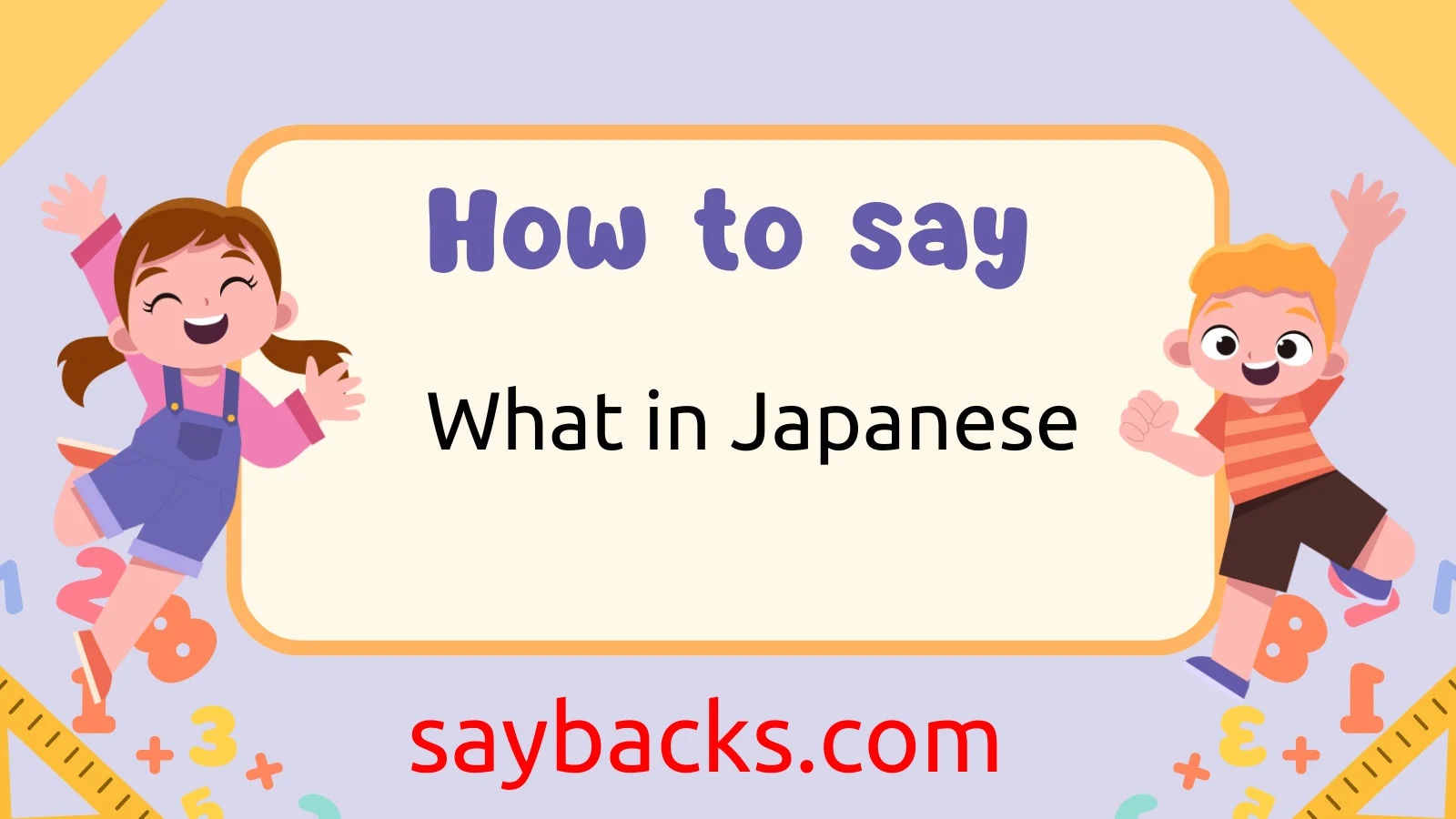Learning a new language can be exciting—and a little confusing. One of the first words people want to learn is “what.” It’s a small word, but how to say what in Japanese changes depending on the sentence.
In this guide, we’ll break it down step by step. We’ll show you when to use different forms of “what” in Japanese, give real examples, and help you sound natural when asking questions. If you’re just starting out or brushing up your skills, this post will make it easier to understand and remember.
1. The Basic Word for “What” Is なに (nani)
✅ Use it like this:
- なに? (Nani?) — “What?”
- なにをたべますか? (Nani o tabemasu ka?) — “What will you eat?”
Why it matters:
This is the most common and basic way to say “what.” You can use it by itself or in full questions.
2. Use なん (nan) Before Certain Words
Sometimes “nani” changes to “nan” when it comes before words starting with certain sounds like “d” or “n.”
✅ Examples:
- なんですか? (Nan desu ka?) — “What is it?”
- なんじですか? (Nanji desu ka?) — “What time is it?”
❌ Don’t Say:
- なにですか? (It’s not wrong, but it’s less common than なんですか?)
Why it matters:
This small change helps your Japanese sound more natural and correct.
3. Ask Politely: “What Is That?”
✅ Use:
- それはなんですか? (Sore wa nan desu ka?) — “What is that?”
This is a polite way to ask someone what something is.
Real-life use case:
👉 You’re in a Japanese market and see a food you don’t recognize. You can say:
“それはなんですか?” to ask the vendor.
4. Use “What Kind” or “What Type” in Japanese
When asking about kinds or types of things, use:
✅ Words:
- どんな (donna) — “What kind of”
- なにいろ (nani iro) — “What color”
Examples:
- どんなたべものがすきですか? (Donna tabemono ga suki desu ka?) — “What kind of food do you like?”
- なにいろがすきですか? (Nani iro ga suki desu ka?) — “What color do you like?”
Why it matters:
Japanese has many ways to ask “what.” These help when you want to ask more than just “what is that?”
5. When to Use なに vs. なん
A simple rule:
✅ Use なに (nani) when the next word starts with:
- A consonant not “d” or “n”
✅ Use なん (nan) when the next word starts with:
- D (like です)
- N (like に)
Examples:
- なにをしますか? — What will you do?
- なんにんですか? — How many people?
Why it matters:
This rule isn’t strict grammar—it’s about smooth pronunciation. Japanese flows better when you follow this.
Final Thoughts: How to Say What in Japanese
Now you know how to say what in Japanese in many ways! Use なに for simple questions, なん before certain words, and try phrases like “それはなんですか?” to ask politely. Japanese may seem tricky at first, but with practice and these tips, you’ll start sounding natural in no time! 🇯🇵

